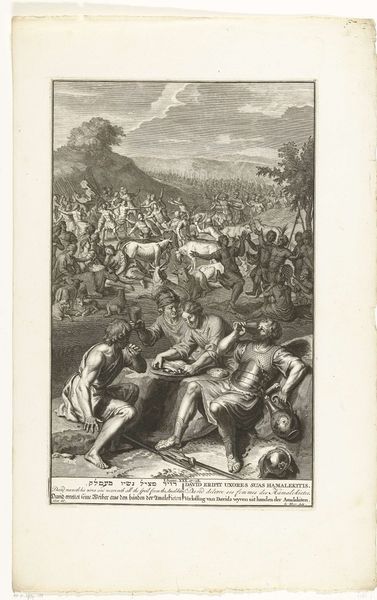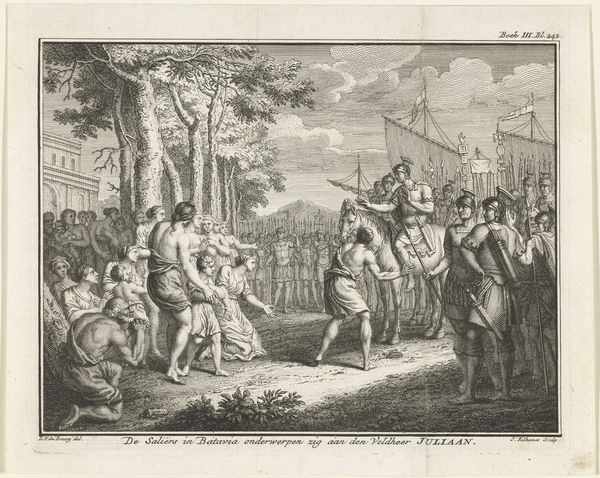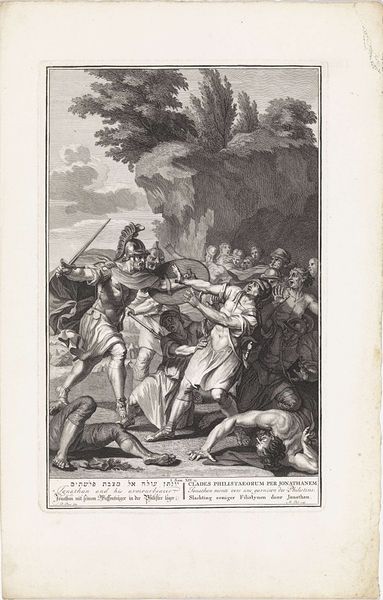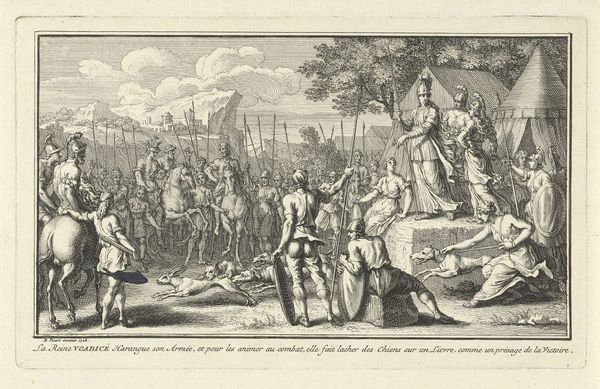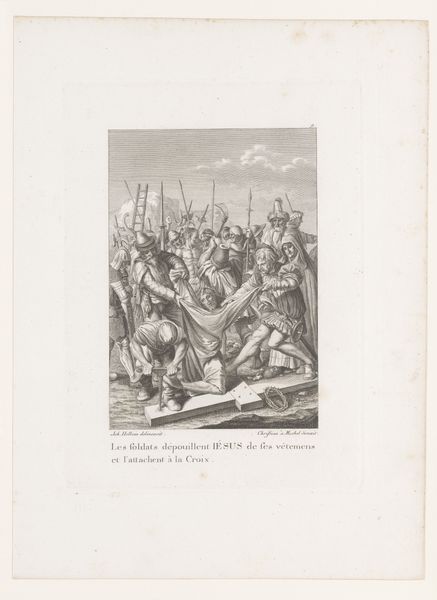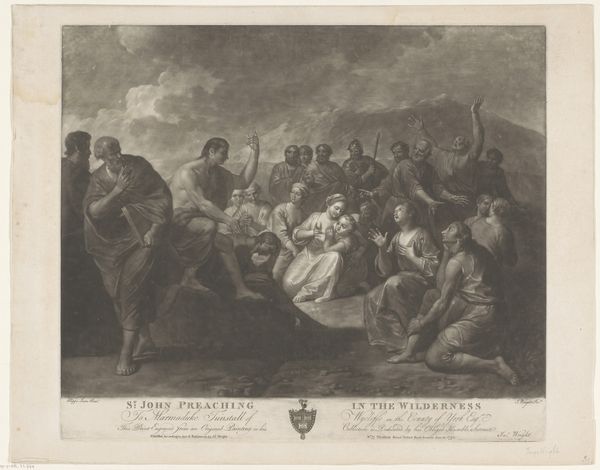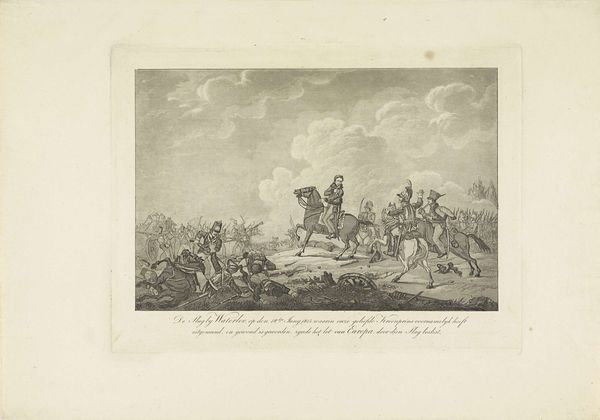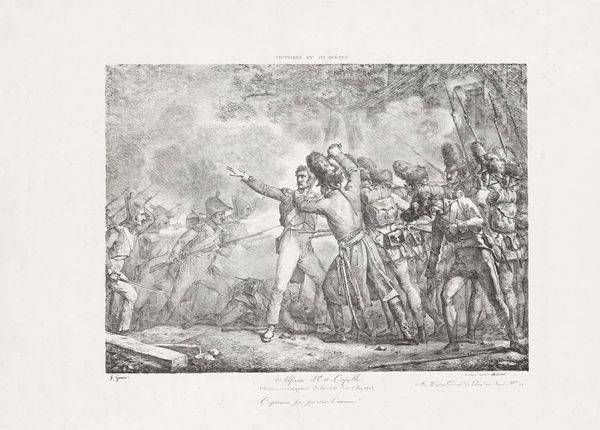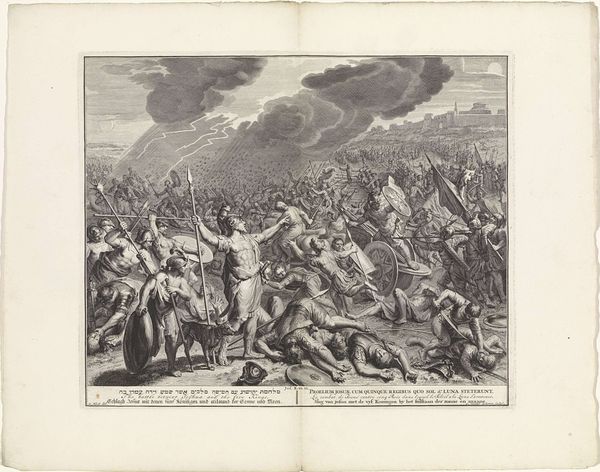
print, engraving
#
narrative-art
#
baroque
# print
#
figuration
#
history-painting
#
engraving
Dimensions: width 414 mm, height 357 mm
Copyright: Rijks Museum: Open Domain
Editor: This is Gilliam van der Gouwen’s "Kruisdraging" from 1728, an engraving, and I’m struck by the starkness of the scene despite the Baroque style. So much suffering on display. What catches your eye when you look at this print? Curator: I immediately consider the context. Prints like this played a critical role in disseminating religious narratives and political ideologies during the 18th century. How do you think the artist is attempting to shape public opinion with this particular depiction? Editor: Well, I suppose the intense emotionality, the almost theatrical grief, might be intended to inspire piety and perhaps a sense of shared suffering with Christ. Curator: Precisely. But think about who this print was intended for. Was it meant for private devotion, or public display? Was it affordable to the common person? Editor: Good point. Because it's an engraving, that suggests wider circulation. It feels almost like propaganda, attempting to cement a certain narrative. Curator: The composition itself supports that idea. The central figures, Christ and the Roman soldier, are positioned almost like actors on a stage, with the surrounding crowd serving as witnesses and emotional amplifiers. Do you notice how the artist uses linear perspective? How does this serve this public agenda? Editor: It directs your gaze, right? Everything focuses on Christ. Almost like forcing the viewer into a position of sympathy. And look how the city looming in the background reinforces a sense of judgment or doom. Curator: And it wasn't just about religious doctrine. Think about the role of the Church and its influence in society. Prints like these reinforced its authority. So, by portraying this event in this specific way, van der Gouwen is also commenting on and reinforcing existing power structures. Editor: It’s fascinating how a single image can reveal so much about the political and cultural climate of the time! Curator: Absolutely. It makes you think about who is telling the story, and *why*.
Comments
No comments
Be the first to comment and join the conversation on the ultimate creative platform.
